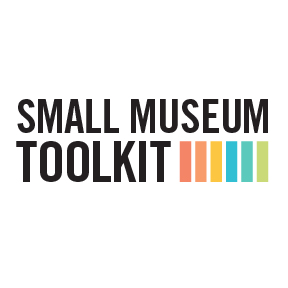A good interpretive
plan offers key concepts and a structure that is designed to spin a web of
connections for the visitor between what they are seeing in the museum and
their own experiences and lives. Strong
connections strongly will capture the visitor’s imagination on a deep
level. Although we cannot in every
instance do this explicitly, the more connections that visitors can make to the
story of your museum, the more often they will want to visit and become
engaged.
Interpretive Planning
is a process that takes time. First, all
in the organization must be on board knowing that the plan will ultimately
generate new ideas and approaches. It
can be helpful to emphasize that the plan may only codify messages that are
already part of the museum’s current offerings.
While an Interpretive Plan
can be a wholesale change in how a museum approaches itself, it does not have
to be. If you do not want to lose
existing stakeholders while you consider strategies for building relationships
with new ones, it is helpful to think of the plan as one that will include
existing messages or aspects of your interpretation you already do well.
All interpretation
must rest on bedrock of good scholarship, so do involve scholars and other
experts early and often. Engage actively
with scholarship, reading new material in your field regularly. When developing interpretive planning
documents, staff and volunteers should conduct their own research and build
their own knowledge foundations.
At the same time,
remember that you have an obligation to convey scholarship to a wide
public. Academic research should support
what you do, but do not let it take over.
Although the post-modern discourse related to the “liminal space of the
dining room table’s social topography” (as one scholar opaquely commented in a
planning session) may sound impressive and contain some really good nuggets of
academic research, you need to play the translator.
This does not mean
“dumbing down.” Just the opposite. You want to challenge your audience, engaging
fully with difficult topics and complex ideas.
As discussed in the chapter on “Interpreting Difficult Issues,” topics
related to race, ethnicity, war, violence, immigration, enslavement and class
all belong in museums. Complicated
issues or problems can have great resonance for visitors. These topics are made more tangible and
meaningful when you can rely on solid, up-to-date research in crafting your
interpretation.
Stephen G. Hague is currently the Society of Architectural Historians of Great Britain Ernest Cook Trust Research Student at Linacre College, University of Oxford, England. His research interests center on architecture, material culture, and social history in the eighteenth-century British Atlantic world. Previously he worked as executive director of Stenton, a historic house museum in Phila- delphia administered by the National Society of the Colonial Dames of America in the Commonwealth of Pennsylvania. He holds a master’s in history from the University of Virginia and a bachelor’s from Binghamton University.
Laura C. Keim is curator of Stenton and Wyck, two house museums located in historic Germantown, as well as a lecturer in historic interiors at Philadelphia University. A graduate of the Winterthur Program in Early American Culture, she holds a preservation degree from the University of Pennsylvania and a bachelor’s in art history from Smith College. She has published widely on early American material culture and coauthored Stenton’s interpretive plan.
Laura C. Keim is curator of Stenton and Wyck, two house museums located in historic Germantown, as well as a lecturer in historic interiors at Philadelphia University. A graduate of the Winterthur Program in Early American Culture, she holds a preservation degree from the University of Pennsylvania and a bachelor’s in art history from Smith College. She has published widely on early American material culture and coauthored Stenton’s interpretive plan.

